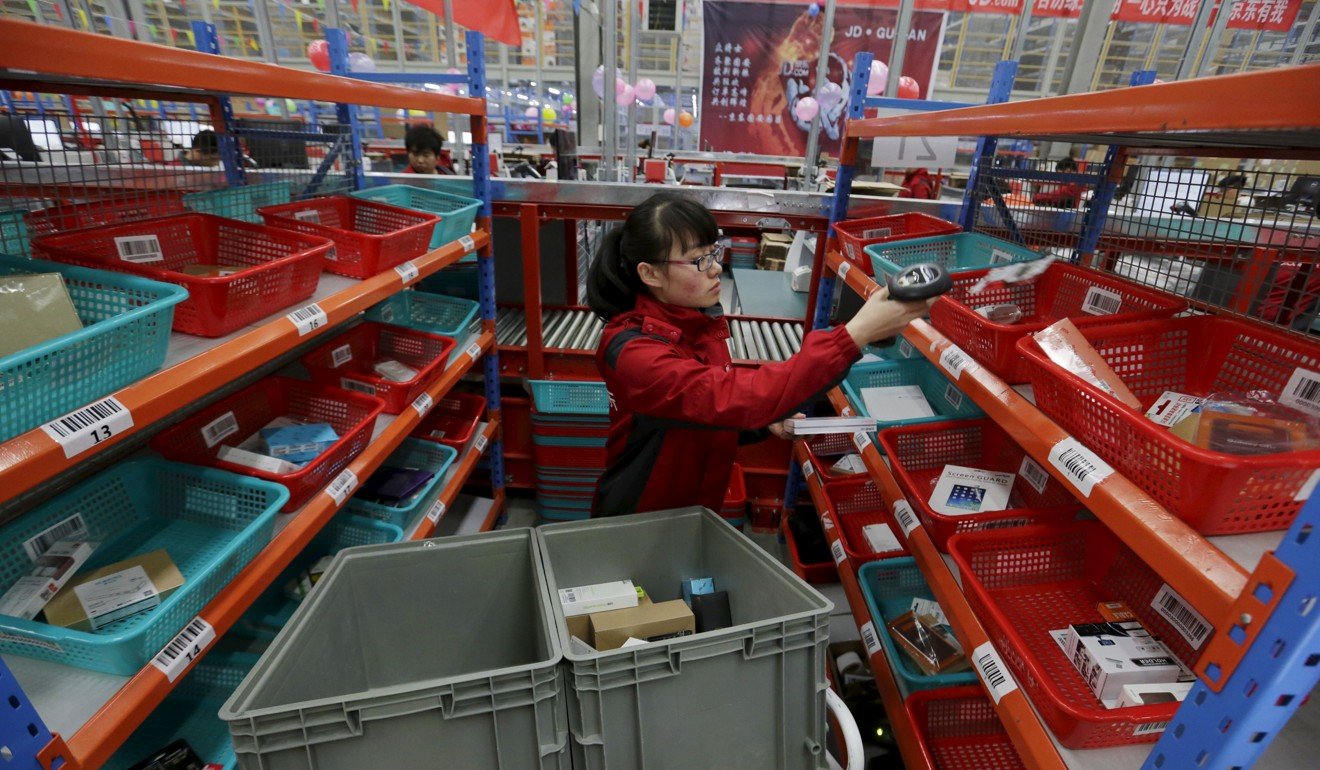
JD.com to help China’s offline retailers harness e-commerce to improve efficiency
With offline sales comprising 85 per cent of China’s retail market, Chinese online retailer JD.com believes that the next retail revolution should not just focus on helping consumers gain a more personalised shopping experience – the e-commerce giant also wants to help suppliers and merchants harness the use of technology to improve operating efficiency.
“For offline retail in China, efficiency is still very low,” said Ling Chenkai, vice-president of JD.com’s corporate strategy group, pointing out that even the biggest offline commerce players each only hold a small share of the market. “It’s not like in overseas markets, where corporations like Walmart [dominate].”
Like its main e-commerce rival Alibaba, which is building its first offline mall in Hangzhou, JD.com has been dabbling in the offline space. In April, JD.com chief executive Liu Qiangdong said that the company would open 1 million brick-and-mortar stores over the next five years.
In second and third-tier cities, JD.com has also opened so-called 3C stores, selling computers, communication devices like smartphones, as well as consumer electronics. The company plans to have 300 such stores operating within the next year.
But JD.com, currently China’s second largest e-commerce player, doesn’t have its sights set on simply grabbing offline retail market share away from current players, Ling said. Rather, it hopes to help empower China’s many offline retailers with its technology, offering “retail as a service”.
“At JD.com, we take part in the entire value chain and provide end-to-end services, not just on the transaction end of the deal, but also for the supply chain,” said Ling in an interview with the South China Morning Post. JD already operates automated warehouses and has its own logistics network, which can deliver anything from goods to chilled, fresh produce.
By working with offline retailers, JD.com hopes it can help improve the offline retail industry as a whole, by helping merchants optimise efficiency and lower operating costs.
“We can offer technologies like automated shopping trolleys that can follow consumers around the store, and even automatic pricing systems,” Ling said.
“The idea is that eventually there will not be a differentiation between online and offline retail. Consumers can order something online and walk into an offline store to pick it up.”

“For JD.com, we have a stronger logistics infrastructure than other players, we work with suppliers more closely during in the supply chain,” he said. “[Our competitors] may have their own strengths and strategies.”
Ling cautioned offline retailers who view e-commerce as a threat.
“Online and offline players are not enemies. To be the most efficient, they need to cooperate and be interdependent, engage in data-sharing,” he said.
“Ultimately, we want to improve the efficiency of retail with technology. With that comes lower cost ... and everyone benefits, be it consumers or merchants.”

